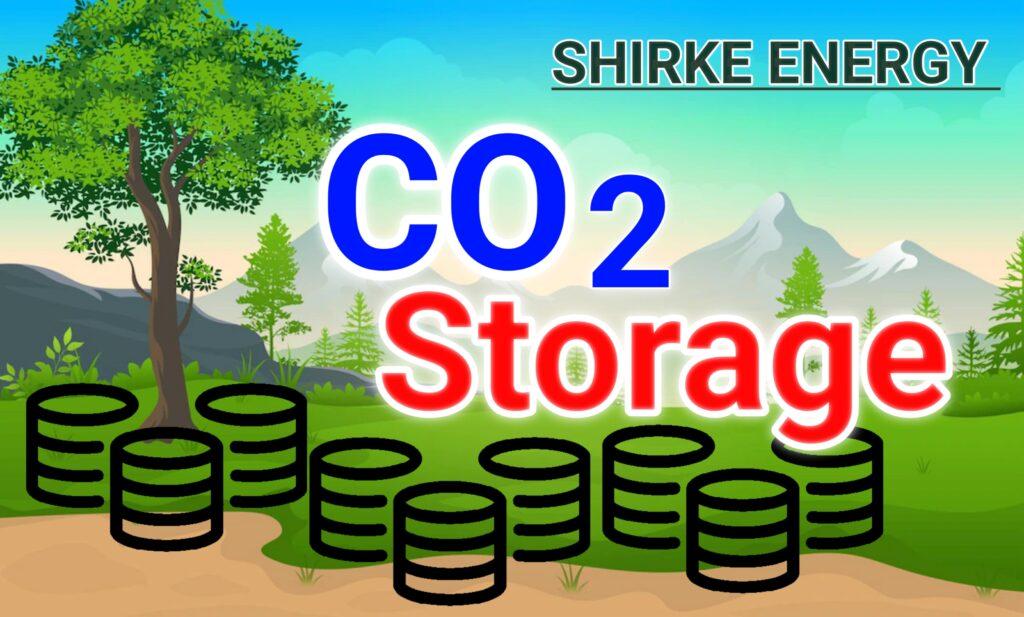
Carbon storage, or sequestration, is a method by which carbon rich gases are absorbed from the atmosphere, converted into other products. The carbon is then stored in plants, soil, oceans, or geological formations. This process has occurred naturally for billions of years.
Nowadays, humans are trying to utilise the same technology to reduce the amount of carbon dioxide released by industrial activities. Carbon capture and storage (CCS) is the process of capturing CO2 from industrial emissions and storing it. This process helps in reduce carbon emissions in the atmosphere or energy system.
In some cases, captured carbon (CO₂) is used to produce manufactured goods and in industrial and other processes. The abbreviation CCUS (carbon capture, utilization, and storage) refers to such utilisation. Various CO₂ uses lead to different levels of emissions reductions, depending on the specific use. It also depends on fuels or other materials, if any, that the CO2 is displacing. The ultimate effects of climate change depend on whether these uses lead to permanent sequestration or storage of CO2.
One of the primary uses of CO₂ is for enhanced oil recovery, a method of crude oil extraction that uses CO₂ and water to drive oil up the well. It improves oil recovery and stores CO₂ underground. In a soda carbonation application, stored CO2 gets released immediately upon opening. This kind of short-term use is not an acceptable utilization option.
Geologic Carbon Storage
Geologic carbon Sequestration or storage means injecting CO2 at depths greater than ~1 km into porous sedimentary formations. The oil and gas industry injects CO2 to enhance oil recovery, using the same technology(CO2-EOR). With industrial experience with CO2-EOR and the disposal of CO2-rich acid gas streams, natural gas storage allows some confidence in estimating the cost of geologic storage. It also suggests that the risks may be manageable.
Suitable formations found in deep sedimentary basins. A low permeability cap rock confines the less dense CO2 flowing upwards. The flow makes any breach in the confining layer a possible pathway for upward escape and drives horizontal movement, making the real extent of the CO2 plume much larger. The CO2 will dissolve into pore fluids, eliminating buoyant forces that drive upward motion. This movement slows down the pace CO2 moved out of the formation. Geochemical processes might immobilize CO2 in the long run.
Ocean Carbon Sequestration
OCS is a technique for distributing CO2 more equally throughout ocean deep and reducing effects on the ocean’s surface. There are two methods of OCS : direct injection and ocean fertilization. The largest sink of atmospheric CO2 is the ocean. The oceans cover over 70% of the Earth’s surface and have an average depth of 3,800 m.
The oceans have absorbed about one-third of anthropogenic CO2, leading to a decrease in surface-ocean total pH by about 0.1 units from about 8.2 to 8.1. If CO2 emissions continue unabated, the subsurface ocean total could decline by 0.7 units by 2300. From a geological perspective, the surface ocean pH has not been below 8.1 during the past 2.1 million years. Scientists expect to add about 5000 PgC of carbon to the atmosphere in the next 500 years. This is the fastest rate of carbon addition the earth has ever seen over a recent geological period.
At typical ocean temperatures and pressures, CO2 exists as a gas above 500 m and as a liquid below this depth. Between 500 and 2700 m depth, liquid CO2 is less dense than seawater and would float, while below 2700 m, CO2 is denser than seawater and would sink.
Carbon Sequestration Advantages
The key carbon storage advantages that make it an essential technology for addressing climate change:
- Reduces CO2 Emissions: Carbon storage captures and stores carbon dioxide underground, preventing it from entering the atmosphere and contributing to global warming.
- Supports Net-Zero Targets: By safely storing carbon, this technology helps industries and countries meet their net-zero emissions goals, crucial for climate action.
- Enhances Industrial Sustainability: Carbon storage allows for cleaner industrial processes by capturing emissions from hard to decarbonize sectors like cement, steel, and energy.
- Promotes Long Term Environmental Impact: Stored CO2 remains securely underground, providing a long term solution for reducing the Earth’s carbon footprint.
- Boosts Green Energy Transition: Carbon storage can complement renewable energy sources, enabling a smoother transition to a low carbon economy.
The transformative potential of Carbon Sequestration or Storage is creating a sustainable future for our planet.